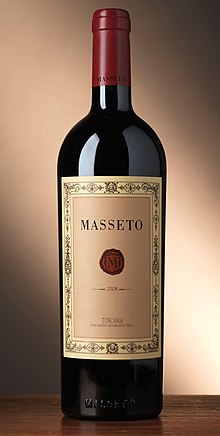Indicazione Geografica Tipica
Indicazione Geografica Tipica , abbreviated IGT , is the quality level of Italian wine that corresponds to German country wine and French Vin de Pays . It was introduced by Law No. 164 on February 10, 1992. The wines can have a geographical name combined with a grape variety on the label .
With the new EU wine market regulation of 2009, the designation of origin for wine was standardized in line with food law and the protected geographical indication (PGI) classification was adopted for country wine , in Italy this EU indication is called Indicazione Geografica Protetta (IGP). However, Italy continues to allow the old national information to be used alongside the new EU names.
In terms of quality, the IGT and IGP wines are above the simple table wine (Vino da tavola) and below the more strictly controlled and regulated wines with Denominazione di origine controllata (DOC) and Denominazione di Origine Controllata e Garantita (DOCG). Sometimes, however, higher quality wines such as the " super Tuscans " are sold as IGT wines if they contain grape varieties that may not be used according to local DOC regulations.
In the French-speaking part of the Aosta Valley , the name IGT may be replaced by the French term Vin de pays , in the German-speaking part of South Tyrol by the country wine .
literature
- Jancis Robinson : The Oxford Wine Lexicon . Hallwag, Gräfe and Unzer, Munich 2006, ISBN 978-3-8338-0691-9 .
- Burton Anderson: Italy's Wines 2004/05 . Hallwag, Gräfe and Unzer, Munich 2004, ISBN 3-7742-6365-5 .
- Jacques Orhon: Le nouveau guide des vins d'Italie . Les editions de l'homme, Montreal 2007, ISBN 978-2-7619-2437-5 .
Web links
Individual evidence
- ↑ The new wine labeling regulations in Italy ( Memento of 27 November 2013, Internet Archive ). Article on the Wein-Plus website (accessed June 27, 2013).
